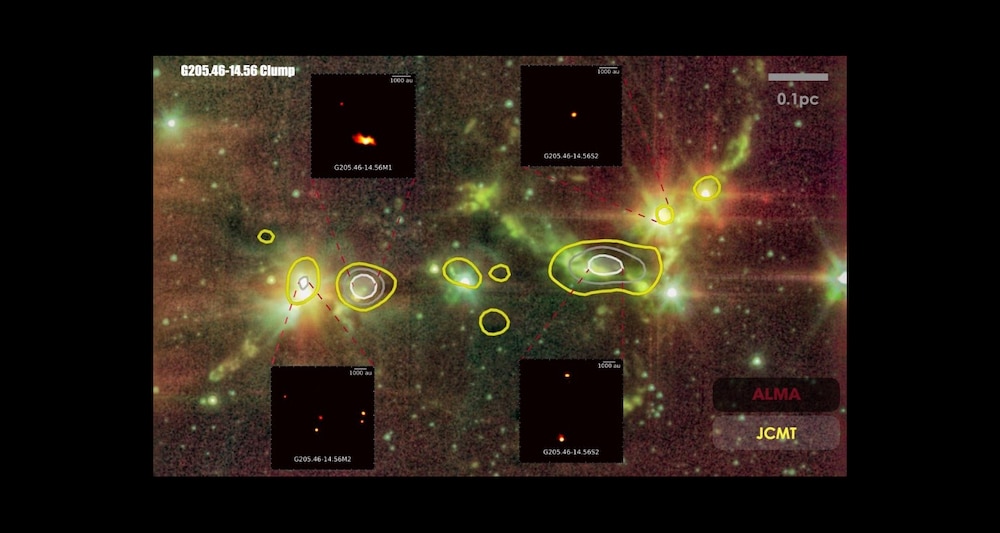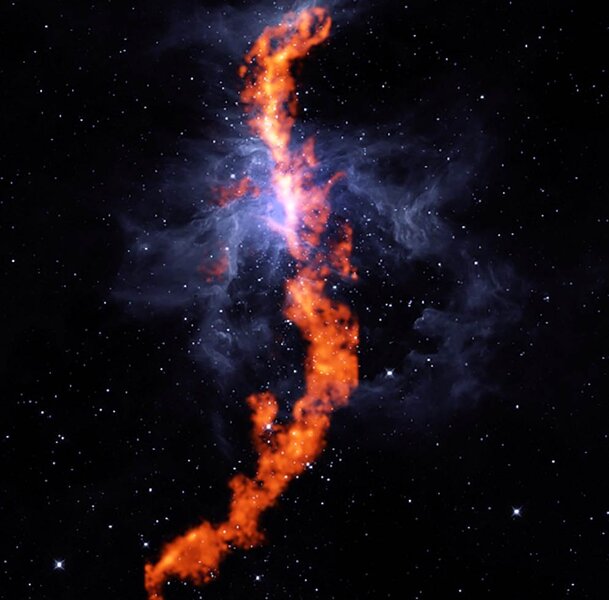Create a free profile to get unlimited access to exclusive videos, sweepstakes, and more!
Multiple stars like being born in chaos
Dense and turbulent stellar nurseries make more binary stars.

A surprising fact about the Universe is that a significant number of stars are in binary systems, where two stars orbit each other. It depends on the type of star — red dwarfs tend to be more solitary, while high-mass stars are more likely to be in multiple systems — but something like 1/3 of all stars are in binary systems.
As an example, if you pick 100 stars in the sky, roughly 70 will be solo, like the Sun, and 30 will be in binaries — 15 binary systems. There’s also a chance some will be in higher-order systems, like trinaries or quatenaries or even more stars all orbiting each other.
But… why? We have a pretty decent understanding of how stars form in general, but are there specific conditions that make it more likely for stars to form close enough together to become gravitationally coupled? And if so, what are they?
This isn’t well understood at all. So, to help clear it up, a team of astronomers looked to Orion. That part of the sky is lousy with dark, dense molecular clouds — gigantic cold nebulae filled with hydrogen molecules and dust and other key ingredients needed to make stars. We know that some of these clouds are actively forming stars, and at a decent enough rate that it’s possible to get some good statistics from them. And bonus, they’re close to us, less than 1,500 light-years, that they can be studied in detail.
So they used the James Clerk Maxwell Telescope in Hawai’i, which is sensitive to light with submillimeter wavelengths [link to paper]. That’s important, because molecular clouds are fantastically opaque to visible light, the kind we see, but allow longer wavelengths out. Objects inside the cloud, like newly forming stars, that emit these kinds of long-wavelength light can be detected.
Mapping out three different clouds in Orion, including the lovely integral-sign-shaped Orion A cloud which includes the famous Orion Nebula, they found dozens of “cores”; dense knots of gas and dust that are forming stars. Once identified, they turned to ALMA, the Atacama Large Millimeter/submillimeter array in Chile, which can see these wavelengths with better resolution and higher sensitivity. ALMA, together with the Nobeyama Radio Observatory in Japan, allowed them to measure properties of these star-forming cores, including whether one or more stars were forming together, the masses of the cores, and crucially their internal velocities — a measure of how the gas inside the core is moving.
On average they found that about half the stars forming in these clouds were in multiple systems: There were 29 single stars and 13 binary/multiple systems. All the cores were about the same size, but some were more massive than others. That means their densities were higher, and that turns out to be important.
They found that the binary systems were more likely to be forming in the denser cores. That’s actually expected! Stars form as these knots of material collapse under their own gravity, and material streams down to the center to build the stars up. Denser material all jammed together is less stable, and tends to fragment as it collapses, creating several dense spots where stars can form. So denser material naturally makes multiple stars.
But when they mapped the velocities they got a surprise. Gas moving toward us undergoes a Doppler shift, and its wavelength gets shorter. Gas moving away has its wavelength stretched out. If a gas clump is just sitting there quietly, we see very little shift, but if it has a lot of turbulence, with gas swirling around every which-way inside it, we see a lot of wavelength shifts all at once.
The astronomers found that multiple stars tend to form more often in cores with higher turbulence. Why that may be so isn’t clear. But we do know that stars in binary systems tend to be more massive than solo stars. That means they gain mass more rapidly as they form, and this means the gas flows onto them faster. This could create turbulence inside the core where they form.
Another weird thing they found is that in cores forming binary stars, one star is usually farther along the evolutionary path than the other star, as if one is aging faster and closer to turning on and becoming a true star than the other one. This may have to do with where the stars are in the core — the faster-maturing one is generally closer to the core center and the slower aging one more toward the outskirts where there’s less material to feed on.
This knowledge is new, mostly because we haven’t had the capability to probe stellar cores with this kind of detail before. New technology = new discoveries. Even now the astronomers say they didn’t observe enough cores to get a truly solid feel for what’s going on, so many more need to be surveyed. Then we can really understand why some stars like the Sun go through life alone, while others keep companions with them for their billions of years.




























